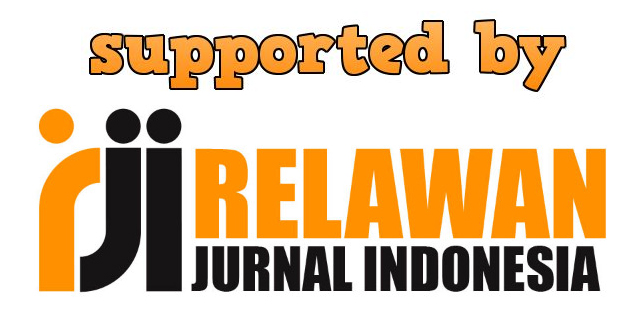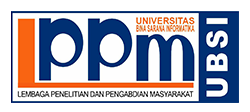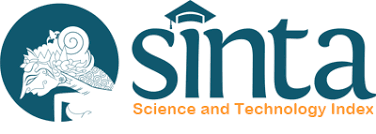Kebanggaan dan Perilaku Memelihara Potensi Pariwisata
Sari
Cibuntu, Kuningan di Jawa Barat memiliki berbagai potensi pariwisata. Daya tarik wisata tersebut dapat dikelompokkan menjadi tiga bagian, yaitu wisata budaya, wisata alam, dan wisata buatan. Ketiga obyek wisata tersebut bersifat unik. Kekhasannya ini melekat sebagai identitas mayarakat yang tinggal di desa Cibuntu. Perasaan seseorang yang memiliki keterikatan dengan suatu tempat disebut rasa kebangsaan atau yang dikenal dengan istilah nasionalisme. Perilaku masyarakat terhadap potensi wisata yang dimiliki dapat menggambarkan rasa nasionalisme masyarakat tersebut. Penelitian ini bertujuan untuk menganalisa keterkaitan kebanggaan masyarakat desa dan kesadaran memelihara budaya yang dimiliki desa mereka. Responden berjumlah 45 orang penduduk desa. Penelitian menggunakan disain penelitian deskriptif. Sampel dipilih secara acak sederhana. Data dikumpulkan dengan cara menyebarkan kuesioner. Analisis meliputi uji validitas dan reliabilitas, analisis frekuensi, serta analisis mean dan korelasi. Hasil penelitian menunjukkan bahwa semua responden merasa bangga terhadap kekayaan budaya, alam, serta wisata buatan di desa mereka. Penelitian ini juga menemukan bahwa responden sudah merasa memelihara budaya, alam, serta wisata buatan yang terdapat di desa mereka tetapi penerapanannya harus lebih ditingkatkan.
Kata Kunci: Perilaku masyarakat desa, potensi pariwisata.
ABSTRACT
There are many rural tourism resources in Cibuntu, Kuningan, West Java. It could be grouped into three items. They are cultural resources, natural resources, and human made tourism. Those resources are unique. This uniqueness is tied to people identity who live there. The feeling of someone who are attached to a certain place could be called as nasionalism. The rural tourism behavior of their tourism resources might describe a sense of their nasionalism. This research aimed to analyze the link of rural tourism behavior and their willingness to maintain their tourism resources at the village. The respondents were forty-five of rural residents. The study made use of descriptive research design. The sample were choosen by simple random sampling. The data were collected by distributing questionaires. The analysis included validity and reliability test, frequency analysis, mean, and correlation analysis. The study found that all respondents were proud of their own culture, nature, and human made tourism. It’s also found that all respondents have had a willingness to take care of their own culture, nature, and human made tourism but it must be improved in its implementation.
Keywords: Tourism resources, rural tourim behavior, and pride
Teks Lengkap:
PDFReferensi
Alegre, J; Mateo, S; Pou, L.(2010).An Analysis of households’ appraisal of their budget constraints for potential participation in tourism. Tourism Management Journal, vol. 31, 45.
Amalia, M., & Sumarti, T.(2014).Peluang usaha serta kerja akibat kehadiran wisatawan pada komunitas Tugu. Sodality: Jurnal Sosiologi Pedesaan. Bogor: penerbit Departemen SKPM FEMA IPB, vol.8(2), 109.
Arasli, H.; Baradarani, S.(2014).European tourist perspective on destination satisfaction in Jordan’s industries. Procedia: Social and Behavioral Sciences, vol. 109, 1416-1425.
Ardinal, B.Z.; Kolopaking, M.; & Lala.(2014).Peran paguyuban dalam pembangunan kawasan desa. Sodality:Jurnal Sosiologi Pedesaan, vol.8(2),131.
Ayuningtyas, D.I., & Dharmawan, A.H.(2011).Dampak Ekowisata terhadap Kondisi Sosio-Ekonomi dan Sosio-Ekologi Masyarakat di Taman Nasional Gunung Halimun Salak. Sodality: Jurnal Sosiologi Pedesaan, Vol.5(3), 247.
Botterill, K.; Hopkins, P.; Sanghera,G; Arshad,R. (2016). Securing disunion: young people’s nationalism, identities and (in) securities in the campaign for an independent Scotland. Political Geography Journal, vol 55, 124.
Bouchon, F; Rawat,K.(2016).Rural areas of ASEAN and tourism services, a field for innovative solutions. Procedia:Social and Behavioral Scoences, vol. 224,45.
Chiappa, G.D; Atzeni, M; Ghasemi, V. (2016). Community-based collaborative tourism planning in islands: a cluster analysis in the context of Costa Smeralda. Journal of Destination Marketing & Management. http://dx.doi.org/10.1016/j.jdmm.
Dhalyana, D., & Adiwibowo,S. (2013).Pengaruh Taman Wisata Alam Pangandaran terhadap kondisi sosial ekonomi masyarakat (Studi: Desa Pangandaran, Kecamatan Pangandaran, Kabupaten Ciamis, propinsi Jawa Barat. Sodality:Jurnal Sosiologi Pedesaan, vol.7(3), 214.
Chin.H.; Lo, M.C.; Songan, P.; Nair, V. (2014). Rural tourism destination competitiveness: a study on Annah Rais Longhouse homestay, Sarawak. Procedia: Social and Behavioral Sciences 144, 35-44.
Eshliki, S.A.; Kaboudi,M. (2012).Community perception of tourism impacts and their participation in tourism planning: a case study of Ramsar, Iran. Procedia: Social and Behavioral Sciences, 36, 333.
Hijriati, E., & Mardiana, R. (2014). Pengaruh ekowisata berbasis masyarakat terhadap perubahan kondisi ekologi, sosial, dan ekonomi di Kampung Batusuhunan, Sukabumi.Sodality:Jurnal Sosiologi Pedesaan, vol.8(3), 167.
Ingkadijaya, R.; Damanik, J; Putra, H.S.A.; Nopirin. (2016). Tourist activities contribution on family cohesion dalam Radzi,S.M. et al(eds), Heritage, culture, and society: Research agenda and best practice in the hospitality & tourism industry, 345-350. London: Taylor & Francis Group.
Lee, T.H.; Hsieh, H.P. (2016). Indicators of sustainable tourism: a case study from a Taiwan’s Wetland. Ecological Indicators 67, 779.
Liang, Z.X; Hui,T.K. (2016). Residents’ quality of life and attitudes toward tourism development in China. Tourism Management, 57, 56.
Muthahharah, A & Adiwibowo, S. (2015). Dampak obyek wisata Pantai Pasir Putih Situbondo terhadap peluang bekerja dan berusaha. Jurnal Sosiologi Pedesaan, vol.3(2), 101.
Naef,P. (2017). Tourism and nationalism in the former Yugoslavia dalam aspect of tourism: commercial nationalism and tourism, selling the national story. Bristol: Channel View Publications.
Prabhakaran,S.;Nair,V.;Ramachandran,S. (2014). Community participation in rural tourism: towards a conceptual framework. Procedia: Social and Behavioral Sciences 144, 290.
Pramanik, D.P.; Widyastuti, N. (2017). Rural tourism destination strategy through SWOT analysis in Cibuntu Village, Indonesia, Proceeding of ASEAN Tourism Research Forum 2017: 27-35. Singapore: James Cook University Singapore, ISBN: 978-967-0173-37-5,Link: http://www.atrasecretariat.com/atrc-2017.
Rahmawati,D; Supriharjo, R; Setiawan,R.P.; Pradinie, K. (2014). Community participation in heritage tourism for Gresik resilience. Procedia:Social and Behavioral Sciences 135, 142.
Santoso, S. (2002). Panduan lengkap SPSS versi 20: Edisi Revisi. Jakarta: Penerbit PT. Elex Media Komputindo, 166-174.
Sariisik, M.; Turkay, O.; Akova, O. (2011). How to manage yacht tourism in Turkey: a SWOT analysis and related strategies. Procedia: Social and behavioral Sciences 24, 1014-1025,
Sesotyaningtyas, M.; Manaf, A. (2015).. Analysis of sustainable tourism village development at Kutoharjo village, Kendal Regency of Central Java. Procedia: Social and behavioral Sciences 184, 273-280.
Sita, K. & Herawati, E. (2017). Relasi gender pada pekerja pemetikan teh: Studi kasus pembagian kerja dan relasi gender di perkebunan teh Gambung Jawa Barat. Sodality: Jurnal Sosiologi Pedesaan, April 2017, Vol.5(1), 1.
Smith, A.D. (2010). Nationalism: theory, ideologi, history 2nd edition. The Amazone Book Review.
Suwartono. (2014). Dasar-Dasar Metodologi Penelitian. Yogyakarta: Penerbit ANDI, 85.
Swarbrooke, John. (2002). The development and management of visitor attractions. Second edition. Oxford: Butterworth Heinemann, 8.
Thammajinda,R. (2013). Community participation and social capital in tourism planning and management in a Thai Context. A thesis of Doctor of Philosophy. New Zealand: Lincoln University, 19.
Yusuf,M. (2014). Metode penelitian: kuantitatif, kualitatif & penelitian gabungan. Jakarta: Prenadamedia Group, 62.
Viren, P.P.; Vogt, C.A.; Kline,C.; Rummel,A.M.; Tsao, J. (2015). Social network participation and coverage by tourism industry sector. Journal of Destination Marketing & Management 4, 110.
White,L. (2017). Aspect of tourism: Commercial nationalism and tourism, selling the national story, Bristol:Channel View Publications.
Wu, L.; Zhang, J.;Fujiwara,A. (2013). Tourism participation and expenditure behaviour: analysis using a Scobit based discrete-continuous choice model. Annals of Tourism Research, Vol.40,1.http://dx.doi.org/10.1016/j.annals.2012.09.002.
Wulansari, I. (2017). Industrialisasi minyak sawit di Indonesia: Resistensi warga dusun Tanjung Pusaka, Kalimantan Tengah terhadap Industri Sawit. Sodality: Jurnal Sosiologi Pedesaan, Fakultas Ekologi Manusia Institut Pertanian Bogor, April 2017, Vol.5(1), 15.
Zainuddin, Z.; Radzi, S.M.; Salehuddin, M.; Zahari, M. (2016). Perceived Destination Competitiveness of Langkawi Island, Malaysia.Procedia: Social and behavioral Sciences 222, 390-397.
DOI: https://doi.org/10.31294/par.v4i2.2139










